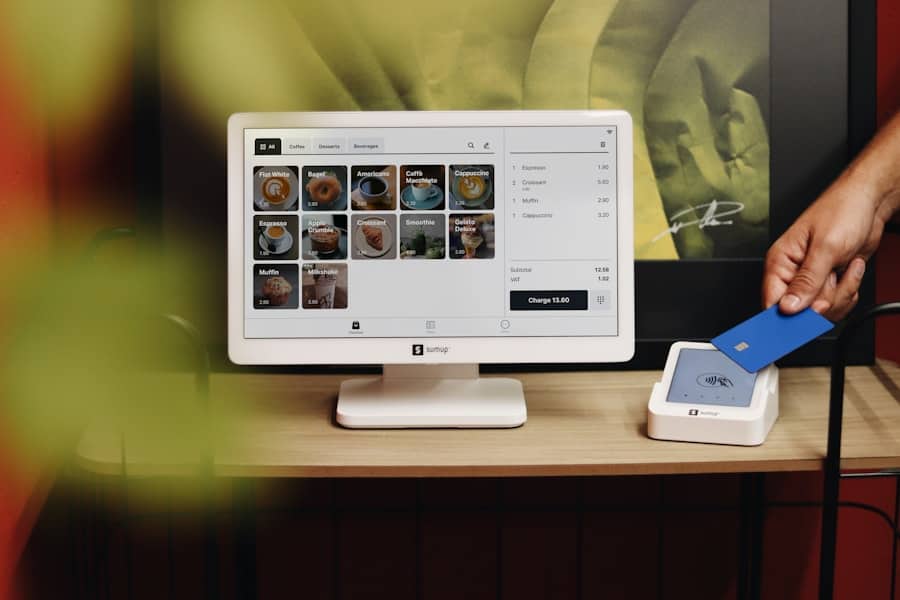Sophos ZTNA (Zero Trust Network Access) is a security solution that provides secure access to applications and resources based on user identity and device trustworthiness. Unlike traditional network perimeters, Sophos ZTNA authenticates and authorizes users and devices before granting access to sensitive data or applications. This approach is essential in the current digital landscape, where remote work and cloud-based applications have become prevalent, rendering traditional security measures insufficient.
Sophos ZTNA employs various technologies, including identity-based access controls, micro-segmentation, and encryption, to create a secure access environment. By implementing a Zero Trust model, Sophos ZTNA verifies and authenticates every access request, regardless of user location or device. This approach enhances security and improves user experience by providing seamless and secure access to necessary resources.
Organizations can use Sophos ZTNA to protect sensitive data and applications from unauthorized access while enabling employees to work remotely without compromising security. This solution addresses the evolving needs of modern businesses in maintaining a secure digital environment.
Key Takeaways
- Sophos ZTNA is a Zero Trust Network Access solution that provides secure access to applications and resources for remote users.
- The benefits of Sophos ZTNA include improved security, simplified access management, and enhanced user experience.
- Factors affecting Sophos ZTNA pricing include the number of users, the level of access required, and additional features or add-ons.
- Sophos ZTNA offers pricing models based on user-based licensing, consumption-based pricing, and enterprise agreements.
- Calculating the cost of Sophos ZTNA involves considering the number of users, the level of access, and any additional features or add-ons required.
- Tips for managing Sophos ZTNA costs include regularly reviewing user access levels, optimizing usage, and leveraging cost-saving opportunities.
- Comparing Sophos ZTNA pricing with other ZTNA solutions involves evaluating features, pricing models, and overall value for the organization.
The Benefits of Sophos ZTNA
Enhanced Security and Reduced Risk
Sophos ZTNA provides enhanced security by ensuring that only authorized users with trusted devices can access sensitive data and applications. This significantly reduces the risk of data breaches and unauthorized access, which can have severe consequences for organizations in terms of financial loss and reputational damage.
Least-Privilege Access and Improved User Experience
Additionally, Sophos ZTNA enables organizations to implement a least-privilege access model, where users only have access to the resources they need to perform their jobs. This further reduces the risk of insider threats and unauthorized access. Furthermore, Sophos ZTNA improves user experience by providing seamless and secure access to applications and resources from any location.
Compliance and Flexibility in Remote Work Environments
This is particularly important in today’s remote work environment, where employees need to access corporate resources from various devices and locations. By implementing Sophos ZTNA, organizations can ensure that their employees have the flexibility to work remotely without compromising security. Additionally, Sophos ZTNA helps organizations achieve compliance with data protection regulations by implementing strong access controls and encryption measures. This is crucial for organizations that handle sensitive customer data and need to demonstrate compliance with regulations such as GDPR and HIPAA.
Factors Affecting Sophos ZTNA Pricing

Several factors can affect the pricing of Sophos ZTNA, including the size of the organization, the number of users and devices that need to be protected, and the specific features and capabilities required. Larger organizations with a higher number of users and devices may require a more comprehensive Sophos ZTNA solution, which can impact pricing. Additionally, organizations with complex network environments or specific compliance requirements may need additional features or customization, which can also affect pricing.
The level of support and service required can also impact the pricing of Sophos ZTNOrganizations that require 24/7 support, dedicated account management, or additional training and consulting services may incur higher costs. Furthermore, the deployment model chosen can also affect pricing, as organizations may opt for on-premises, cloud-based, or hybrid deployment options, each with its own cost implications. Finally, the duration of the subscription or licensing agreement can impact pricing, as longer-term commitments may result in lower costs compared to shorter-term agreements.
Understanding Sophos ZTNA Pricing Models
| Feature | Basic Plan | Advanced Plan |
|---|---|---|
| Number of Users | Up to 100 | Unlimited |
| Number of Applications | Up to 10 | Unlimited |
| Support | Email support | 24/7 phone and email support |
| Customization | Basic | Advanced |
Sophos ZTNA offers several pricing models to cater to the diverse needs of organizations. One common pricing model is based on the number of users or devices that need to be protected. This model allows organizations to pay for the exact number of users or devices they need to secure, providing flexibility and scalability as their needs change over time.
Another pricing model offered by Sophos ZTNA is based on the specific features and capabilities required. Organizations can choose from a range of features such as multi-factor authentication, single sign-on, and granular access controls, each with its own pricing structure. Additionally, Sophos ZTNA offers subscription-based pricing models, where organizations pay a recurring fee for access to the solution and ongoing support and updates.
This model provides predictable costs and allows organizations to budget effectively for their security needs. Alternatively, organizations can opt for a perpetual licensing model, where they pay an upfront fee for perpetual access to the solution, along with optional maintenance and support agreements. This model provides long-term cost savings for organizations that plan to use Sophos ZTNA for an extended period.
How to Calculate the Cost of Sophos ZTNA
Calculating the cost of implementing Sophos ZTNA involves considering several factors. Firstly, organizations need to determine the number of users and devices that need to be protected, as this will directly impact the cost based on the pricing model chosen. Additionally, organizations should consider the specific features and capabilities required, as more advanced features may result in higher costs.
It’s also important to factor in any customization or integration requirements, as these can impact the overall cost of implementation. Furthermore, organizations should consider the level of support and service required when calculating the cost of Sophos ZTNThis includes factors such as 24/7 support, training, consulting services, and dedicated account management. The deployment model chosen should also be taken into account when calculating costs, as on-premises, cloud-based, and hybrid deployment options each have different cost implications.
Finally, organizations should consider the duration of the subscription or licensing agreement when calculating costs, as longer-term commitments may result in lower overall costs compared to shorter-term agreements.
Tips for Managing Sophos ZTNA Costs

Managing the costs of implementing Sophos ZTNA involves several key strategies. Firstly, organizations should conduct a thorough assessment of their security needs and carefully consider the specific features and capabilities required. By understanding their exact requirements, organizations can avoid overpaying for unnecessary features or underestimating their needs.
Additionally, organizations should consider their long-term security strategy when choosing a deployment model for Sophos ZTNA, as this can impact costs over time. Furthermore, organizations should carefully review the level of support and service required when implementing Sophos ZTNBy accurately assessing their support needs and negotiating service agreements effectively, organizations can manage ongoing costs more efficiently. It’s also important for organizations to regularly review their usage and needs for Sophos ZTNA to ensure that they are not paying for unused or unnecessary resources.
Finally, organizations should consider engaging with a trusted partner or reseller who can provide guidance on cost-effective implementation and ongoing management of Sophos ZTNA.
Comparing Sophos ZTNA Pricing with Other ZTNA Solutions
When comparing Sophos ZTNA pricing with other Zero Trust Network Access solutions, it’s important to consider several factors. Firstly, organizations should compare the specific features and capabilities offered by each solution and how they align with their security needs. While some solutions may offer a lower upfront cost, they may lack critical features that could result in higher long-term costs due to additional security measures needed.
Additionally, organizations should consider the level of support and service provided by each solution when comparing pricing. A solution with a lower upfront cost may require additional investment in support and service to meet organizational needs effectively. Furthermore, organizations should carefully evaluate the scalability and flexibility of each solution when comparing pricing.
A solution with a lower upfront cost may lack scalability or require additional investment in the future as organizational needs change. Finally, organizations should consider the reputation and track record of each vendor when comparing pricing. While some solutions may offer lower upfront costs, they may lack the reliability and security track record of more established vendors like Sophos.
By considering these factors comprehensively, organizations can make an informed decision when comparing Sophos ZTNA pricing with other Zero Trust Network Access solutions.
If you’re interested in learning more about the future of cybersecurity and its potential impact on virtual spaces like the metaverse, you may want to check out this article on entering the metaverse and exploring virtual spaces. It discusses the intersection of technology and virtual environments, which is relevant to the evolving landscape of cybersecurity solutions such as Sophos ZTNA pricing.
FAQs
What is Sophos ZTNA?
Sophos ZTNA (Zero Trust Network Access) is a cloud-based secure access service that provides secure access to applications, data, and resources without the need for a traditional VPN.
How does Sophos ZTNA work?
Sophos ZTNA uses a zero-trust approach to verify the identity and trustworthiness of users and devices before granting access to applications and resources. It uses a combination of user identity, device posture, and application access policies to ensure secure access.
What factors can affect Sophos ZTNA pricing?
Factors that can affect Sophos ZTNA pricing include the number of users, the level of access required, the number of applications and resources to be accessed, and any additional features or services required.
Is Sophos ZTNA pricing based on a subscription model?
Yes, Sophos ZTNA pricing is typically based on a subscription model, where customers pay a recurring fee for access to the service.
Are there different pricing tiers for Sophos ZTNA?
Yes, Sophos ZTNA may offer different pricing tiers based on the level of access, features, and support required by the customer. Customers can choose the tier that best fits their needs and budget.
Can I get a custom quote for Sophos ZTNA pricing?
Yes, customers can typically request a custom quote for Sophos ZTNA pricing based on their specific requirements and usage needs. This allows for a more tailored pricing approach.











Leave a Reply